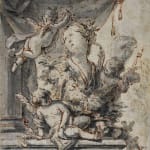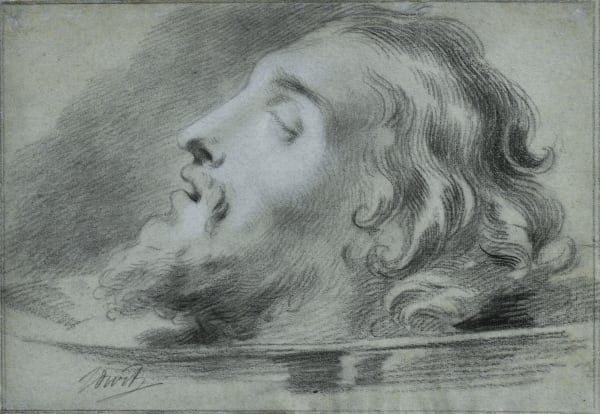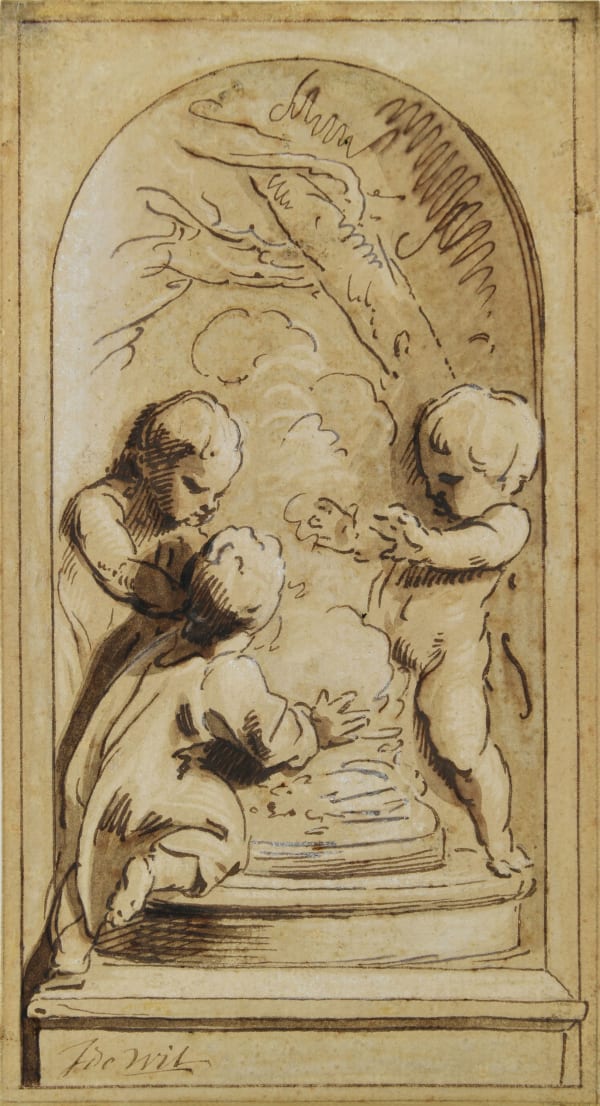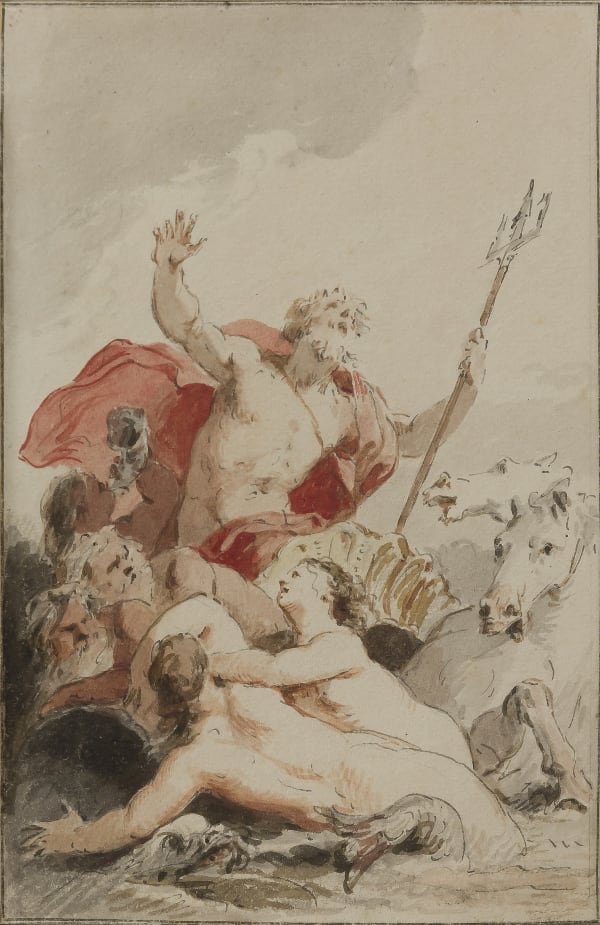
Jacob de Wit, Liefde Triompheert, ca. 1715.
Rijksmuseum Twenthe, Enschede.
Jacob de Wit (Amsterdam 1695 - 1754)
Jacob de Wit was born in Amsterdam in 1695. He received his first training, with the painter Albert Spiers, at the early age of nine. When he was thirteen, he went to Antwerp to study at the Academy. He became a pupil of Jacob van Hal, and went on to become a member of the guild of St Luke in 1714. While in Antwerp, he also produced a series of watercolour sketches of the ceilings decorated by Rubens in the Jesuit St Carolus Borromeus Church. As the church was struck by lightning a few years later and the ceilings were lost in the fire, these works, which were later engraved, became important historical documents. The work and style of Rubens – especially his cycle for the Borromeus church – were to leave a lasting impression on de Wit.
In 1715, de Wit returned to Amsterdam, where he became a much sought after artist for his decorative paintings on walls, doors and ceilings. Wealthy patrons who lived on the grachten in Amsterdam commissioned decorations from him. As many of them also had country houses, de Wit did a lot of work in neighbouring Haarlem and Vecht as well. De Wit was a great illusionistic painter who often worked in grisaille. He was also a prolific draughtsman, producing a great number of sketches and drawings for his projects, as well as independant 'picture' drawings, intended as works of art in their own right. His work is represented in nearly all major institutional collections, in addition to many private collections.
The present work is one of the preliminary studies for Liefde Triompheert (see illustration) an early work by de Wit dated to 1715, when the artist was not 20 years old, that is now kept in the Rijksmuseum Twenthe (inv. no. 4119). It has been suggested that de Wit painted this work, along with a presumably lost pendant, for his uncle's house in Antwerp. Interestingly, the drawing differs from the finished work in several respects and so must have been made in the early stages of the work's conception, but the idea of the putti frolicking around the bust of the love goddess Venus was clearly already on de Wit's mind.
Provenance
With Bernard Houthakker;
Private collection, Amsterdam.
Literature
P. Fuhring, Design into Art, Drawings for architecture and ornament, the Lodewijk Houthakker collection, London 1989, p. 237, no. 263 (illustrated).
- X
- Tumblr
-
 Jacob de Wit (Amsterdam 1695 - 1754)Mucius Scaevola before Porsennablack chalk, pen and ink, white highlights on beige prepared paper170 x 238 mmsigned 'Jdwit', bottom left
Jacob de Wit (Amsterdam 1695 - 1754)Mucius Scaevola before Porsennablack chalk, pen and ink, white highlights on beige prepared paper170 x 238 mmsigned 'Jdwit', bottom left -
 Jacob de Wit (Amsterdam 1695 - 1754)The Head of St John the Baptistblack chalk and white highlights on blue laid paper295 x 420 mmsigned 'Jdwit', bottom left
Jacob de Wit (Amsterdam 1695 - 1754)The Head of St John the Baptistblack chalk and white highlights on blue laid paper295 x 420 mmsigned 'Jdwit', bottom left -
 Jacob de Wit (Amsterdam 1695 - 1754)An Allegory of Winterpen and brown ink, brush and wash on laid paper235 x 130 mmsigned 'JdeWit', bottom left
Jacob de Wit (Amsterdam 1695 - 1754)An Allegory of Winterpen and brown ink, brush and wash on laid paper235 x 130 mmsigned 'JdeWit', bottom left -
 Jacob de Wit (Amsterdam 1695 - 1754)Neptune; Ceres, Cybele and Abundance (2)watercolour over pen and brown ink on laid paper175 x 113 mm (each)
Jacob de Wit (Amsterdam 1695 - 1754)Neptune; Ceres, Cybele and Abundance (2)watercolour over pen and brown ink on laid paper175 x 113 mm (each)






